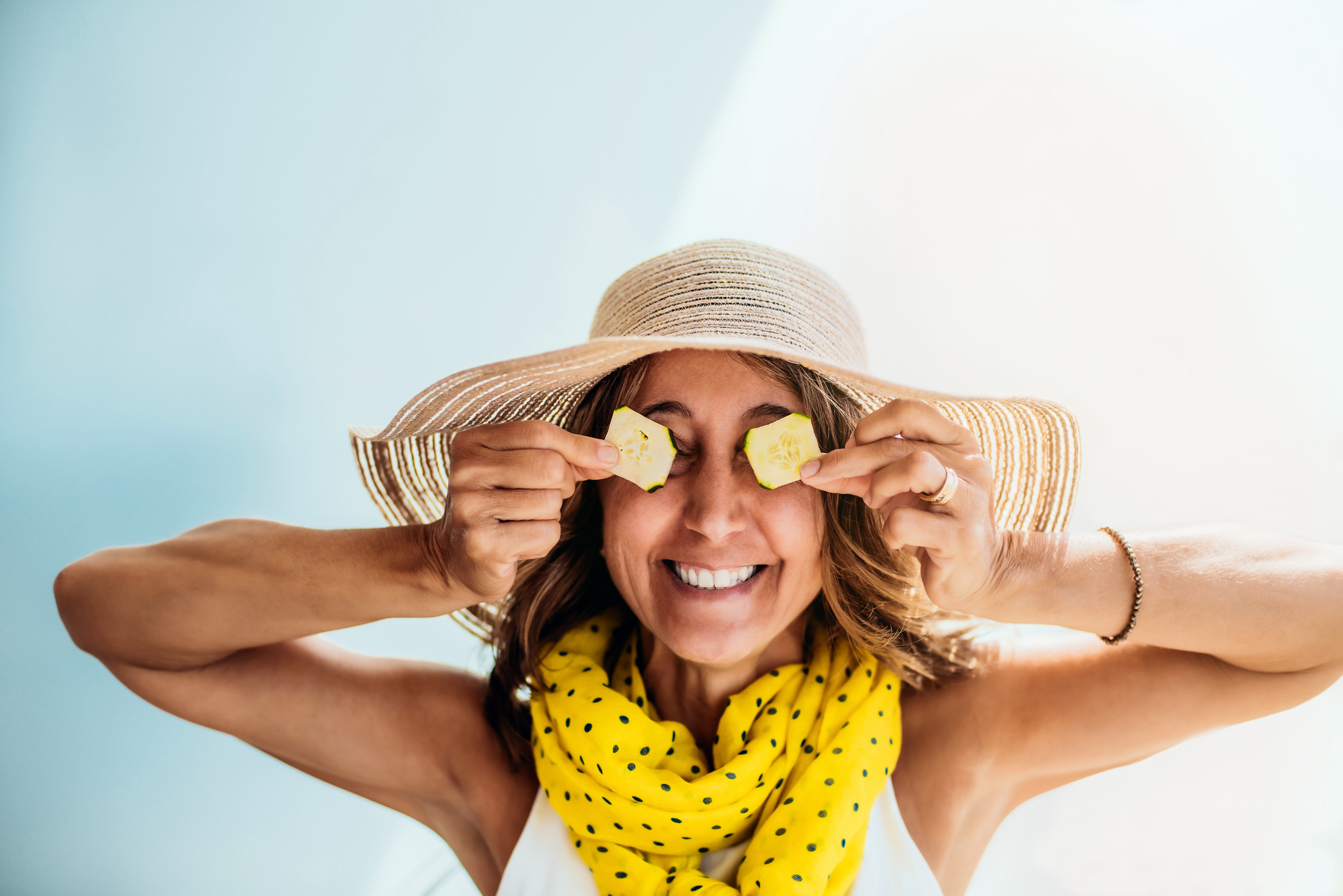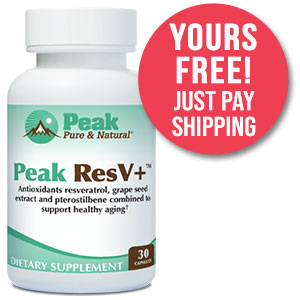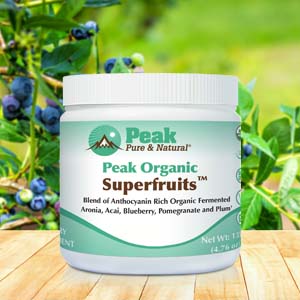

Why do we age? A long-standing science-backed explanation starts with free radical damage.
Free radicals are produced by the body’s own processes and by elements in the environment that damage cells — prematurely aging us before our time.
They do this through a process called “oxidation” which increases illness and accelerates aging.
Think of oxidation like rust…
Ever notice a car in front of you at a traffic light with a rusted muffler? A muffler increases the performance and endurance of a car’s engine by filtering the exhaust system.
But that job exposes the muffler to constant condensation. If the muffler isn’t maintained properly — it rusts. And if the rust isn’t addressed, the problems only get worse…
That’s because what seems to be a “cosmetic” issue is actually an outward sign that the exhaust system has begun to deteriorate.
The most destructive source of oxidation
The sun is responsible for about 80 percent of premature aging.
That’s because overexposure to UV radiation from the sun’s rays increases the formation of reactive oxygen species (ROS) — a specific type of free radical that damages the main proteins responsible for keeping your skin firm and smooth: collagen and elastin.
The effect of oxidation on your skin is called photoaging. Signs of it include sagging skin, hyperpigmentation and wrinkles — all the things that can make you appear older than your years.
If sunscreen were the answer, you wouldn’t be reading this. But sunscreens contain chemicals with hormone-disrupting properties that seep through your skin into your bloodstream — wreaking their own kind of havoc.
But as Harvard says, though there’s no escaping free radicals, antioxidants are the natural “off” switch to break their destructive chain reaction. Antioxidants scavenge the body, hunting down these free radicals and neutralizing them.
Better yet, antioxidants provide free radical protection — from the inside out — by minimizing the cell damage that results in those visible signs of premature aging.
And though it’s important to continue to practice sensible sun protection, animal and human studies have shown that when ingested, these micronutrients are distributed to the skin, where they may provide an additional layer of protection from UV damage.
If you’re looking to get an extra boost of defense against skin aging, start by adding these functional foods and powerful antioxidants to your daily diet…
Phenolics/polyphenol antioxidants
Polyphenols belong to a class of phytonutrients known as phenolics. Polyphenols are powerful antioxidants; in fact, their effect appears to be greater than that of another strong antioxidant, vitamin C.
High concentrations of polyphenols are found in colorful fruits and vegetables including berries, rich greens like broccoli and spinach, yellow onion, red pepper, carrot and cabbage. Large amounts of phenolics can also be found in cocoa, tea, red wine and grape seed extract — foods that have specifically demonstrated photo-protective properties that have caught the attention of researchers…
Grapes are rich in resveratrol, an antioxidant that spearheaded antiaging research, and has been shown to make old cells new again. But that’s not all the power they pack…
About 60 to 70 percent of the polyphenols in grapes are found in their seeds. Numerous studies have found that eating grapes and/or taking grape seed extract protects against UV skin damage, increases resistance to sunburn and reduces cellular markers of UV damage.
This is likely due to the ability of an especially potent polyphenol compound to slow down the formation of destructive ROS free radicals that form in skin cells after UV exposure: Proanthocyanidins found in pine bark, grape seed, and other plant sources may increase the amount of ultraviolet rays necessary to cause sunburn.
Glutathione is the body’s master antioxidant — and when we consume grape seed extract the amount of glutathione in the body increases significantly. Glutathione is single-handedly the one thing ROS and free radicals don’t stand a chance against, but with age our bodies produce less and less of it naturally.
Cocoa is rich in phenolics known as flavonols. Researchers found a cocoa beverage was effective in reducing skin sensitivity to UV by 15 percent after six weeks and 25 percent after 12 weeks. The effect was found to be similar to that of carotenoid supplements.
Green tea is made from unfermented leaves. As such, it contains the highest concentration of polyphenols, known as catechins, out of all tea types.
Research has found that applying green tea extract topically to the skin protects against UVB rays and provides broad-spectrum protection against skin aging.
Carotenoid antioxidants
Beta-carotene, a precursor of vitamin A, is one of a group of red, orange and yellow pigments called carotenoids. Beta-carotene and other carotenoids are antioxidants that can be found in fruits, vegetables, salmon, eggs and whole grains and provide roughly half of the vitamin A needed in the American diet.
Supplementation with beta-carotene may preserve the skin’s structure. Doses ranging from 15 to 180 mg per day for 10 weeks or longer have been shown to offer moderate protection against UV.
Lutein and zeaxanthin are potent antioxidant carotenoids found in green leafy vegetables such as broccoli, spinach and cabbage. Lutein is structurally related to beta-carotene, but it is an even more powerful antioxidant.
When combined, lutein and zeaxanthin protect the skin against aging and damage. The duo works by inhibiting cell loss, membrane damage and elastin expression in UV-exposed fibroblasts, a type of cell that helps form connective tissue.
Lycopene is a red pigment abundant in tomatoes and their products, and has demonstrated sun protective activity in skin that’s been exposed to UV rays. Both oral and topical forms of lycopene used over long periods of time have been shown to protect against skin erythema — the scientific term for the skin’s response to excessive amount of UV radiation, better known as sunburn.
Astaxanthin appears to act as a sort of natural internal sunscreen by helping to protect your skin from damage by the sun’s ultraviolet (UV) rays. The nutrient builds up in the top two layers of skin, helping to block UV penetration and reduce existing sun damage like wrinkles and lack of elasticity.
Astaxanthin is found mainly in the algae Haematococcus pluvialis and the yeast Xanthophyllomyces dendrorhous, both of which produce it naturally. The algae are a food source for a number of sea creatures, and astaxanthin is what turns their shells and flesh pink.
Because krill feed almost exclusively on these algae, they contain higher amounts of astaxanthin than other marine sources.
Thymoquinone
Thymoquinone, a strong antioxidant, is the key active ingredient in Nigella sativa (also known as black cumin seed) oil. It can support the body against UV-induced ROS.
One study found that consuming full-spectrum Nigella sativa oil helped reduce oxidative stress, inflammatory responses and mitochondrial dysfunction in keratinocytes, the main type of cell in the skin’s outer layers. These responses can all result from excessive UV exposure.
When applied topically, Nigella sativa oil has been found to have an SPF factor greater than 2, meaning it defends against UVB exposure.
A great second-line defense
By adding these nutrients to your daily diet, you can add a second layer of protection against the effects of photoaging.
But it’s important to note that while these foods and nutrients are important supplemental tools for protecting against UV effects, they provide an SPF that’s lower than that of topical sunscreens. Thus, they should be used to complement sensible sun protection methods — and most importantly to cut down on free radicals in your body.
One last note: be aware that photoaging isn’t just a summertime hazard…
Dermatologists say the lighting in our homes and workplaces is an almost constant source of low-level UVA exposure. And blue light from your smartphone, computer or tablet is almost as bad… One study found a week of holding screens close enough to your face to read was equivalent to a minute in the midday sun!
Sources:
What’s New in Natural Compounds for Photoprotection? — Cosmetic Dermatology
UV Radiation & Your Skin — Skin Cancer Foundation
Sunburn symptoms and causes — Mayo Clinic
Suppression of oxidative stress by grape seed supplementation in rats — Journal Nutrition Research and Practice
Fibroblast — National Human Genome Research Institute
Natural skin resilience with thymoquinone — Natural Products Insider
Photoaging: Reversal of the Oxidative Stress Through Dietary Changes and Plant-Based Products — Cureus.com


